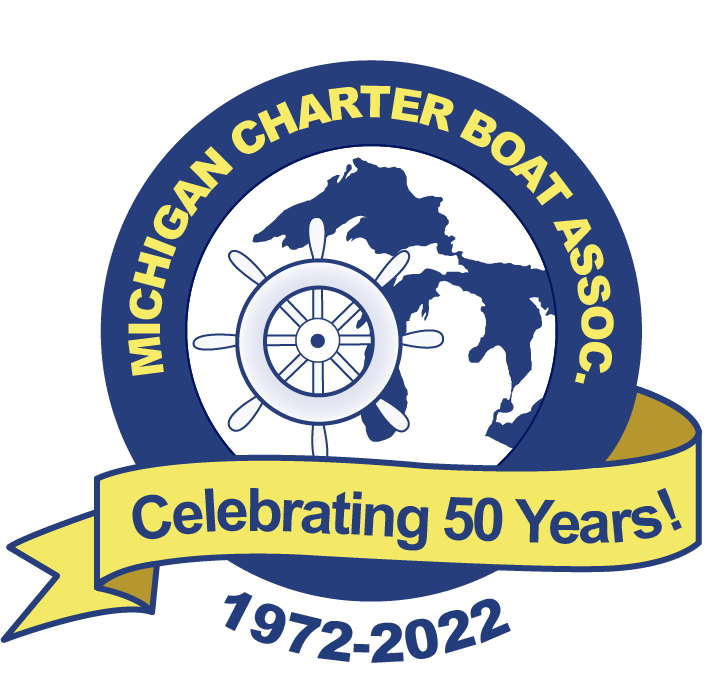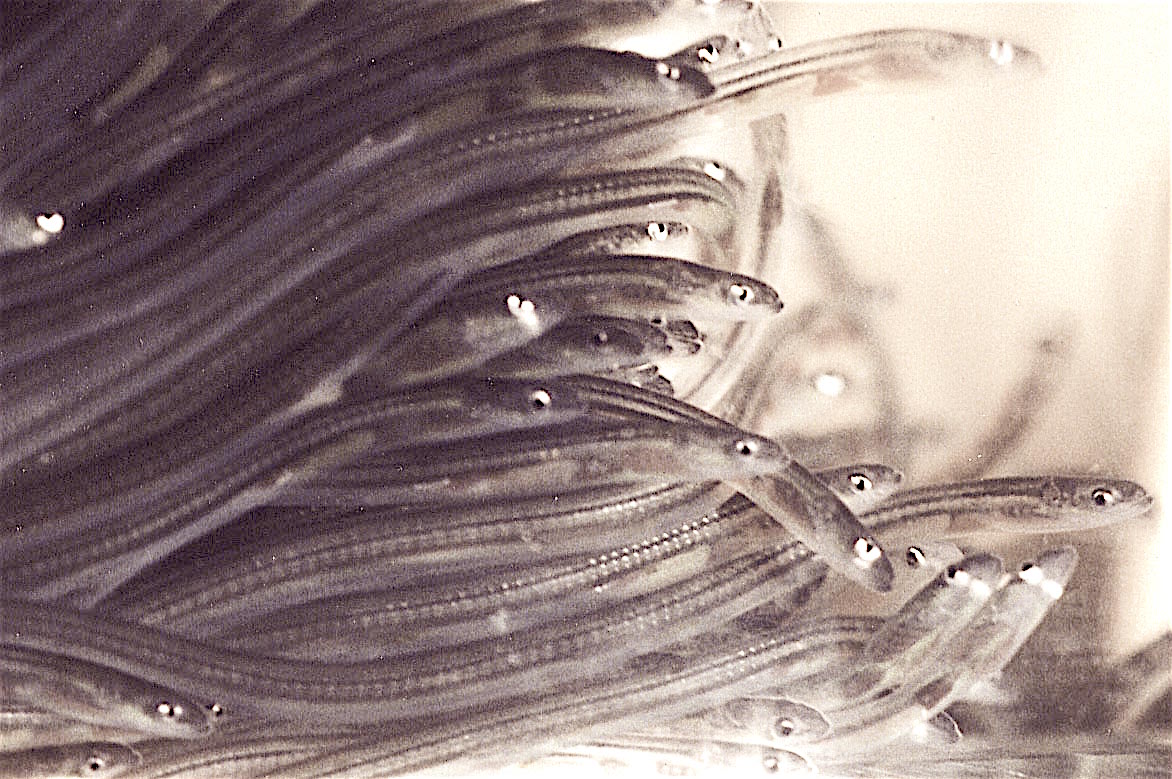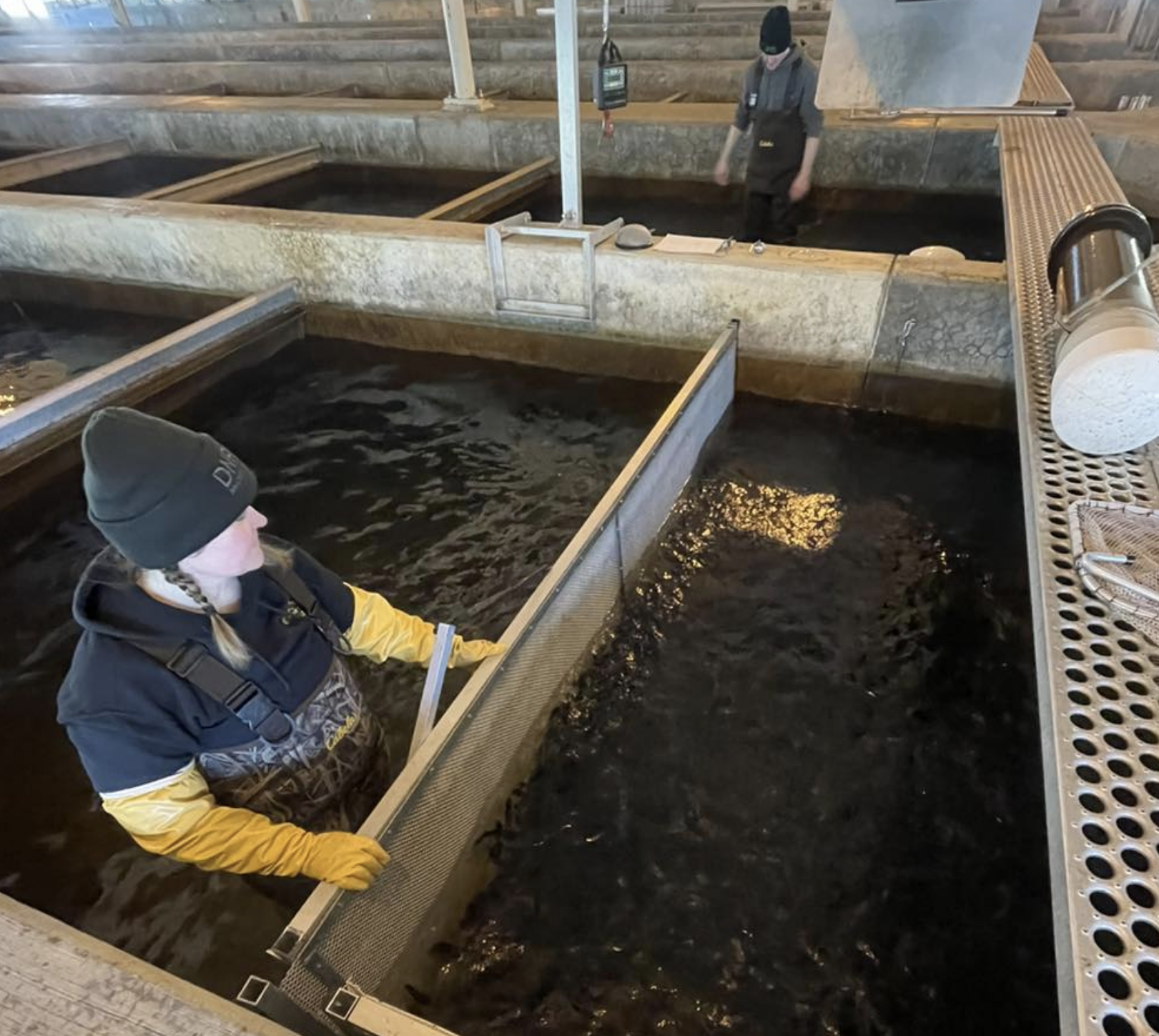LATEST NEWS POSTS
Prized FishAccording the the Great Lakes Fishery Commission (GLFC), a major seizure of baby eels at Toronto’s International Airport, destined for overseas, valued at $400,000 and $500,000. The seizure of 240 pounds of elvers was carried out on mid May by the Department of Fisheries and Oceans and the Canada Border Services Agency. Federal officials have issued a clear warning against traveling to Nova Scotia to illegally fish or export elvers, stating that enforcement officers will be waiting for violators. The baby eels are worth about $2,270 per pound—more than lobsters, scallops, or salmon—making them the most valuable fish by weight in Canada. Elvers weigh just a few grams (approximately 0.1 ounces) and are less than 4 inches long. The baby eels, sometimes called glass eels, are typically flown to Asia where they’re raised to maturity and sold for food and used in unagi dishes at sushi restaurants. Commercial fishers have observed that Department officials have significantly increased their enforcement efforts in recent years, moving away from what was previously seen as a soft approach to poaching. Elvers are fished at night from coastal rivers in Nova Scotia, New Brunswick, and Maine. They are harvested in the springtime as they return to the rivers from their ocean spawning areas. The slippery fish can be harvested using minimal equipment, often with a bucket and a fine, funnel-shaped net called a fyke net or a dip net. Elvers Elvers are young, baby eels that are in the early stages of their lifecycle.
OFF-LINEMCBA Reached Out to the CILERMichigan Charter Boat Association reached out to the University of Michigan CILER who owns and maintains the Ludington weather buoy. The delay in this Springs’ deployment of Ludington Weather Buoy 45024 is due to the fact that it is getting a complete makeover and upgrade, according to lead engineer Russ Miller of the University of Michigan CILER. The new weather buoy will weigh only two hundred pounds, with upgraded technology. It will also allow the buoy to be tended by a smaller vessel, which will hopefully allow for longer and earlier periods of deployment. The target date for deployment is mid to late June. He is aware of our busy season and our tournament, so they are working to make sure it will be available for this important stretch. Further updates will be given as they become available.rich professional relationships and provide a means of self-expression. weather bouy
Exciting New Indiana State Record: Perch Caught in Lake Michigan In an extraordinary feat, angler Blas Lara shattered Indiana’s 43-year-old state record by landing a colossal yellow perch weighing 3 pounds, 2 ounces. This record-breaking catch occurred during the Mayor’s Fishing Derby in Hammond on April 21, 2024, according to the Indiana Department of Natural Resources (DNR). This impressive perch surpasses the previous record of 2 pounds, 8 ounces set by Roy W. Burkel Jr. in 1981. Not only does this achievement highlight the thriving fishery in Lake Michigan, but it also marks the second long-standing fishing record broken in Indiana this year. The remarkable size of Lara’s perch is a testament to the growing number of jumbo perch in Lake Michigan. Over the past few years, perch in the lake have experienced accelerated growth rates, with many reaching trophy sizes of 14 to 17 inches. Yellow perch, native to Lake Michigan, are highly sought after by anglers for their abundance and exceptional quality as table fare. Despite a decline in overall population, Indiana’s perch fishery continues to flourish, providing anglers with exciting opportunities to land trophy-sized fish. Lara’s record-setting catch is not just a personal triumph but also a thrilling highlight for Indiana’s fishing community, signaling that Lake Michigan remains a premier destination for anglers pursuing giant perch.
Lake Wide Assessment Survey S/V Steelhead operations on Lake Michigan, April-June 2024The DNR will be conducting our spring Lake Wide Assessment Survey in Lake Michigan starting April 15 and completing by June 30. These surveys use overnight gill nets 2,000-4,000 feet in length at depths ranging from 30-150 feet (see diagram below). Our targeted sampling stations can be from 2-10 miles (randomly selected) north and south of the pierheads at the following ports: St. Joseph, South Haven, Saugatuck, Grand Haven, Arcadia, Leland, Elk Rapids, and Charlevoix. Our nets are marked with orange-flagged buoys that stand over 6 feet tall and are labeled with our agency identification. A few countries have a special flag worn by recreational boats or ships, which indicates the nationality of the ship. Although inspired by the national flag, the yacht ensign does not always correspond with the civil or merchant ensign of the state in question. Please inform all pertinent personnel of our schedule. We can be reached via marine radio channel 16 using the call sign “SN Stee/head’. If you have any questions regarding our sampling schedule, please feel free to contact me by e-mail at hanchinp@michigan.gov or by cell phone at 231-330-5290. Read the Full Notice
Upgrades to HatcheriesMichigan is investing significantly in upgrading its state fish hatcheries, which play a vital role in supporting the state’s fish stocking program. With funding of $30 million from the state general fund, improvements are set to revamp facilities that have seen limited updates since the late 1970s. The six state fish hatcheries spread across Michigan will undergo substantial upgrades over the next three years, starting this summer. These upgrades are crucial as many facilities and equipment are nearly 50 years old, highlighting the necessity for modernization. The hatcheries are essential for breeding and rearing various fish species, including brook, lake, brown, and rainbow trout, Arctic grayling, splake, steelhead, salmon species like Chinook, Atlantic, and coho, as well as walleye and muskellunge. The largest portion of the funding, $11 million, is allocated to Wolf Lake State Fish Hatchery in Van Buren County, while Platte River State Fish Hatchery in Benzie County will receive $6 million in upgrades at Platt River. Marquette, Thompson, and Harrietta state fish hatcheries will each benefit from $3.5 million worth of improvements, with Oden State Fish Hatchery in Emmet County receiving $2.6 million. The upgrade projects are categorized into three main areas: infrastructure, energy efficiency, and biosecurity. This includes essential upgrades such as roofing, paving, electrical systems, emergency generators, and HVAC systems, aimed at improving the overall efficiency and safety of the hatcheries. The work is scheduled to take place during the summers of 2024, 2025, and 2026. Leading the project design is Hobbs +
Michigan house bill H.R. 5108, introduced last fall intoVice President Karl Burnside Michigan house bill H.R. 5108, introduced last fall into the State legislature, will allow a 25% annual take of sport fish by commercial fish netting. While it’s fortunate this bill has not yet been passed into law, it is still being diligently worked on by those that proposed it, and those that will benefit from it. When reading into this legislative proposal, it quickly becomes clear that it does not in any way, make the millions of sport angler enthusiast in Michigan the winner if implemented. Those that will benefit are a select few commercial net fishing businesses and potentially the elected officials who bought into such a disastrous proposal to further their own agenda. I view it as a wholesale slap in the face and fleecing of allocated state funds, from the millions of sport fishing enthusiasts and out-of-state guests, who purchase fishing licenses when visiting Michigan to enjoy our Great Lakes fishery. Let’s take Saginaw Bay for example: The DNR has estimated the Walleye population in the past to be somewhere between six and seven million fish. If we average that number to 6.5 million, that is an annual take of over 1.6 million Walleye from Saginaw Bay alone if H.R. 5108 is passed. But let’s look at it from a different perspective, that being pounds of fish. The commercial net fishers are not targeting smaller Walleye. They are targeting restaurant quality size fish, so it






